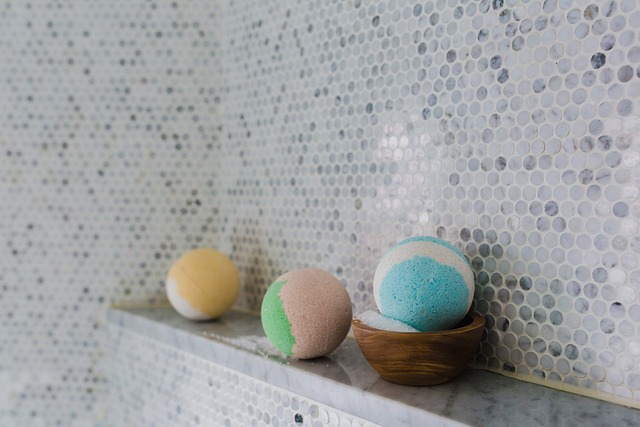Solid surface, quartz, and ceramic countertops are modern, durable options for bathroom renovations. Solid surface offers custom designs and easy cleaning but is sensitive to heat. Quartz is scratch-resistant, non-porous, and comes in diverse colors, while ceramic excels in durability, variety of patterns, and ease of maintenance. When redesigning your bathroom, consider lifestyle needs, aesthetics, and sustainability to choose the best material for a beautiful, functional space with long-lasting countertops.
Looking to transform your bathroom with stylish and durable countertops? This guide explores three top options: solid surface, quartz, and ceramic.
We’ll delve into the benefits of each material, from the seamless integrity of solid surface countertops, to the sleek aesthetics and durability of quartz, and the classic charm and ease of maintenance offered by ceramic.
Whether you’re remodeling or designing a new space, understanding these options will help you choose the perfect countertop for your bathroom.
- Understanding Solid Surface Countertops: A Comprehensive Overview
- Quartz Countertops: Advantages and Style Options
- Ceramic Countertops: Durability, Aesthetics, and Maintenance
- Choosing the Right Material for Your Bathroom Redesign
Understanding Solid Surface Countertops: A Comprehensive Overview
Solid surface countertops, a popular choice for modern bathrooms, offer a seamless and contemporary aesthetic. These countertops are crafted from a mixture of resin, acrylonitrile butadiene styrene (ABS), and various natural materials, such as quartz or mineral dust. The result is a smooth, durable surface that can withstand heavy use and high temperatures. One of the key advantages of solid surface countertops is their ability to create unique, customised designs with minimal waste, making them an eco-friendly option.
They are known for their low maintenance, easy cleaning, and resistance to stains, making them a practical choice for busy households. The non-porous nature of these surfaces ensures that liquids don’t absorb into the material, reducing the risk of staining or water damage. Moreover, solid surface countertops can be shaped and sculpted to incorporate intricate designs, providing a versatile option for those seeking a more artistic bathroom transformation.
Quartz Countertops: Advantages and Style Options
Quartz countertops offer a popular choice for bathroom renovations due to their durability and low maintenance requirements. As a solid surface countertop material, quartz is known for its resistance to scratches, stains, and chips, making it an ideal option for high-traffic areas like bathrooms. It’s also non-porous, preventing bacteria and moisture from penetrating the surface, which is essential for maintaining a hygienic environment.
In terms of style options, quartz countertops come in a wide range of colors and finishes that can suit various design aesthetics. From classic white and gray hues to more bold and vibrant shades, quartz allows for customization. Additionally, it can be enhanced with embedded glass, stone, or metallic veins, adding texture and visual interest to the countertop. This versatility makes quartz an attractive choice for homeowners looking to create a unique and stylish bathroom space without compromising on performance.
Ceramic Countertops: Durability, Aesthetics, and Maintenance
Ceramic countertops offer a blend of durability and aesthetic appeal that makes them a popular choice for many homeowners. Made from clay and other natural materials, ceramic is known for its strength and resistance to scratches and cracks. Unlike solid surface countertops, which can be prone to chip or denting, ceramic remains robust under normal usage conditions. This longevity translates into cost-effectiveness over time, making it a smart investment for any bathroom renovation.
In terms of aesthetics, ceramic provides an extensive range of colors, patterns, and textures that allow for personalized design choices. From subtle neutrals to bold, eye-catching blues or greens, the variety ensures there’s a style to suit every taste. Additionally, ceramic is easy to maintain—a simple routine of cleaning with mild soap and water keeps it looking pristine. Its non-porous surface also makes it resistant to stains, making post-cleaning maintenance effortless compared to natural stone options.
Choosing the Right Material for Your Bathroom Redesign
When redesigning your bathroom, selecting the right countertop material is a crucial step that can significantly impact both the space’s aesthetics and functionality. Each material offers unique benefits, catering to various preferences and budgets. Solid surface countertops, for instance, are popular choices due to their seamless, integrated look, making them easy to clean and maintain. This type of countertop is scratch-resistant and can be molded into intricate designs, offering a seamless blend with your bathroom’s design.
On the other hand, quartz and ceramic countertops provide different advantages. Quartz is known for its durability and low maintenance requirements, while ceramic offers a wide range of colors and styles, making it an excellent choice for those seeking versatility. When considering materials, think about your lifestyle, desired look, and long-term sustainability. Each option has its allure, ensuring your bathroom becomes a stunning and practical space.
When redesigning your bathroom, choosing the right countertop material is crucial. After exploring the options of solid surface, quartz, and ceramic, it’s clear that each material offers unique advantages. Solid surface countertops provide a seamless, non-porous finish ideal for customization and maintenance ease. Quartz stands out with its natural stone look and exceptional durability. Ceramic counters are a budget-friendly choice known for their longevity and aesthetic versatility. Ultimately, selecting the perfect countertop depends on your design preferences, budget, and desired functionality, ensuring your bathroom becomes a functional and stylish space.
